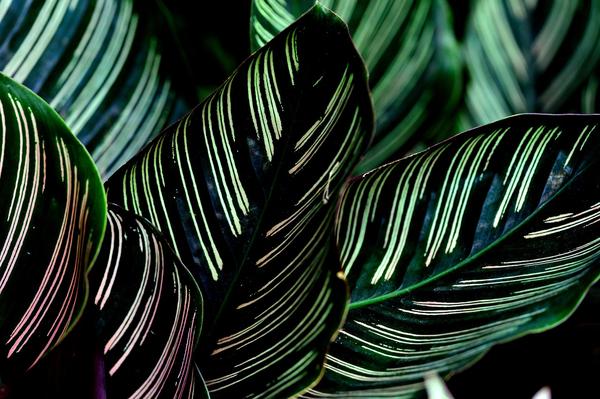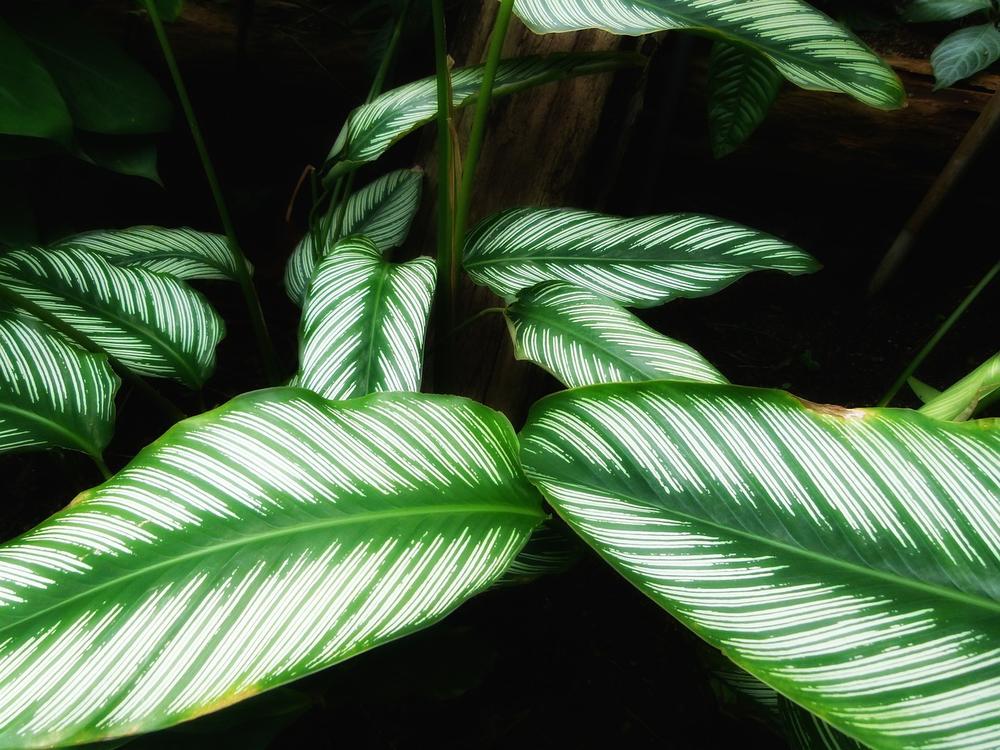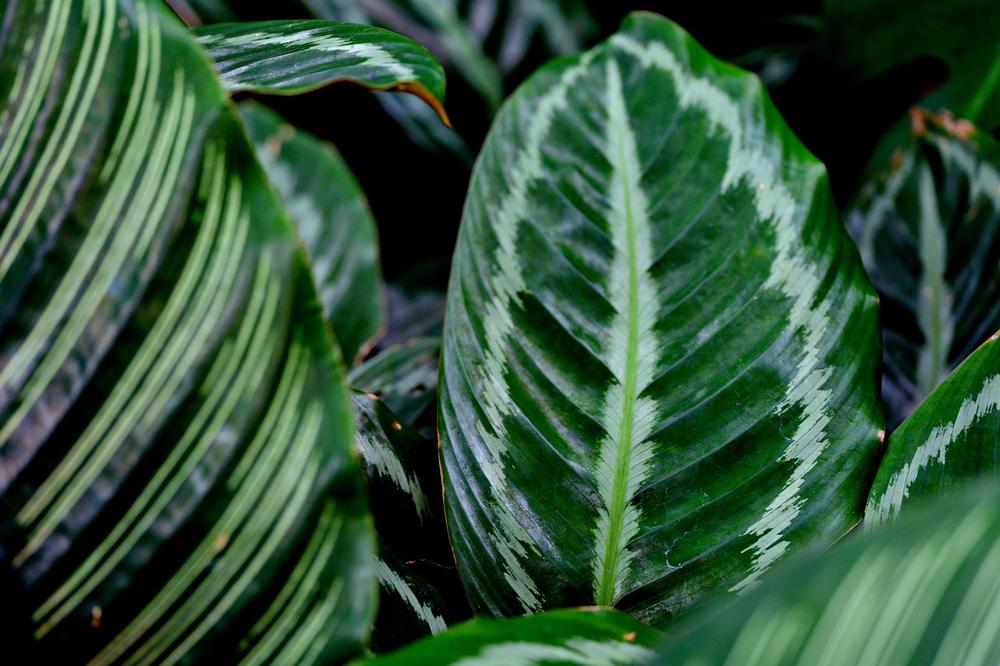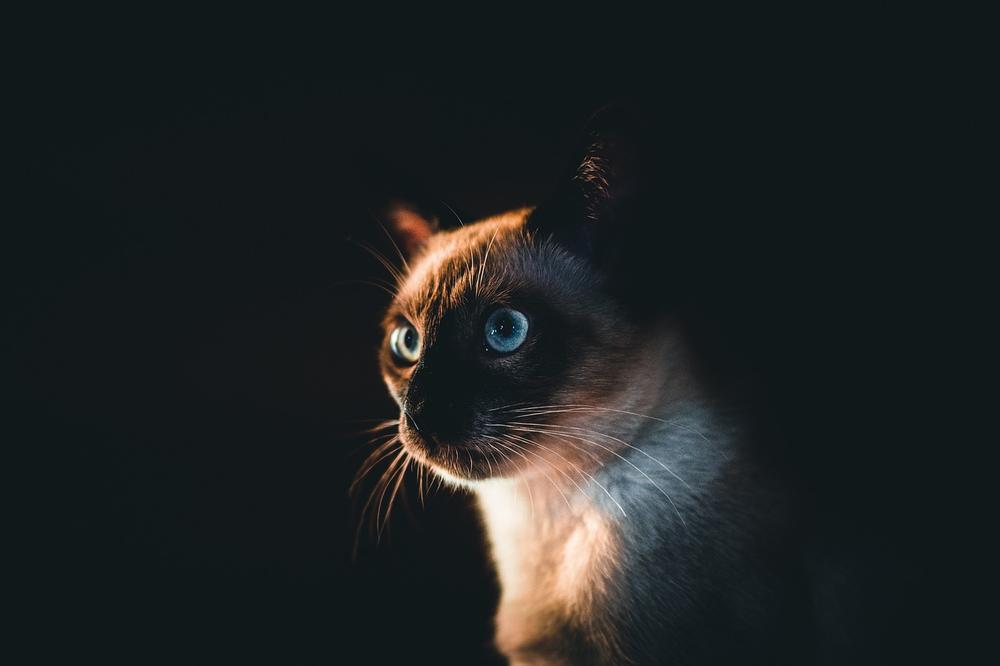Is Calathea Safe to Cats?

Did you know that your innocent-looking houseplant could be a threat to your fur baby?
Yeah, I see the panic in your eyes.
You can't help picturing your poor kitty convulsing on the floor, gasping for air.
It's terrifying, I get it.
But hold on, let's take a breath and dive into the world of Calathea and its impact on our feline companions. 😱
Ready to find out if your precious purr machine is in danger?
Let's begin.
Is Calathea Safe for Cats?
Alright, cat owners, let's dive into the world of calathea...
I understand that you cherish your beloved felines and want to ensure their safety in every aspect. 😺
Let's uncover the truth about calathea:
It's completely harmless for cats! Yes, you heard that right.
Calathea plants are renowned for their non-toxic properties when it comes to our furry companions.
But why is that?
These plants don't contain any harmful substances or toxins that could pose a threat if your little buddy decides to munch on them.

Now, there are various species and cultivars of calathea out there, including Calathea orbifolia, Calathea medallion, Calathea rufibarba, Calathea ornata, Calathea lancifolia, and C. makoyana. And here's the exciting part:
All of them are safe around cats!
However, there's one thing you should bear in mind:
While calathea won't cause any significant harm to your feline friend, consuming a large amount of leaves might lead to some digestive issues.
So, stay alert for any gastrointestinal troubles if your kitty decides to go all-in on calathea.
The USDA and the American Society for the Prevention of Cruelty to Animals (ASPCA) have both validated that calathea poses no toxicity risks to cats and even humans.
Hence, you can relax knowing that your cat can revel in the allure of calathea without any concerns.
Unlike certain indoor plants, calathea lacks chemicals that could potentially harm cats.
Main points I'll expand upon further down this article:
- Calathea is non-toxic to cats, but it's still best to prevent them from nibbling on the plant.
- Avoid using fertilizers or chemicals on Calatheas that could harm cats.
- Ingesting Calatheas can cause gastrointestinal distress in cats, leading to vomiting and diarrhea.
- If a cat consumes Calathea or shows symptoms of toxicity, contact a veterinarian immediately.
- Keep your cat's medical history and any chewed plant parts to provide to the vet if needed.
- Implement measures to keep cats away from your Calathea plants, such as using a spray bottle or strong-scented products.
- Consider covering the soil or placing the plants in unreachable areas to protect your cats.
- Calathea plants provide a safe environment for cats and can create a calming atmosphere in a cat-friendly home.
- Consider other cat-friendly plants like the Prayer plant, Peacock plant, and Spider plant.
- Explore different varieties of Calathea plants for their beautiful foliage and low-maintenance care.
Now, you might be wondering if there are any other potential dangers to consider when it comes to calathea and your furry friends.
Well, I'm here to provide you with some essential information that can help ensure the safety of your cats around these plants...
Understanding Calathea Toxicity
Calathea plants are safe for cats, but caution should be exercised with chemicals like fertilizers. Water from transpiration and saucers is harmless. While eating the plants isn't ideal, issues may arise if cats consume large amounts or lick sap off their fur.
Calathea plants are totally safe for cats, so you can relax. Even if your curious cat decides to taste-test a Calathea leaf, there's absolutely no reason to freak out.
Eating a small amount of the plant won't do any harm whatsoever.
But, here's the thing:
Be careful with chemicals applied to Calatheas like fertilizers or insecticides, as they could cause problems if your furball happens to consume them. So, it's better to keep those substances far away from your precious feline friends.
Now, let's chat about water.
The water released through transpiration and the extra water in the saucer under the pot pose zero threat to kitties.
You don't need to worry one bit about your little buddy falling ill from them.
Even if water spills around the Calathea, it won't affect your cat's health in any way.

However, hold on just a second!
Don't lower your guard completely.
Although eating Calathea plants won't harm cats, it's not the best idea either.
If your mischievous kitty chows down on lots of leaves or accidentally gets the sap on their fur and starts licking themselves clean, issues might arise.
Stay cautious and remain vigilant for any potential hazards!
That said, go ahead and enjoy the stunning beauty of Calathea plants in your home without fretting about your furry companions.
And what about other houseplants? Are there any other dangers lurking for our feline friends? Well, lucky for you, I've got you covered with my blog post, Is Dracaena Toxic to Cats.
If you're thinking of bringing a dracaena plant into your home, it's important to know whether it's safe for your curious little buddy.
So, make sure to check out my article to put your worries to rest!
Symptoms of Calathea Poisoning in Cats
Eating too many Calatheas can mess up your cat's stomach, making them puke or have diarrhea. Trust me, nobody wants that.
You might also notice some milder signs like a messed-up tummy, a fast heartbeat, trouble breathing, and fungal toxicosis.
As a cat owner, you should know these are serious warning signs that something is wrong with your furry pal.
Usually, these symptoms go away in a couple of days, but if your cat is still suffering, it's time to take them to the vet.
If your furball has gobbled up a ton of Calathea, get ready for some serious tummy troubles.
We're talking about puking and diarrhea here, folks.
It's not pretty.

But wait, there's more!
Ingesting too much can lead to even worse stuff like belly pain, liver damage, and yup, you heard it right, death.
I know, it's scary.
But hold on, don't panic just yet.
Remember, different cats react to houseplants differently.
Things like how much they ate and their size affect how poisonous it is for them.
So, before getting a Calathea for your home, do your research and follow instructions carefully.
We don't want any unnecessary trips to the vet, do we? 😿
What to Do If Your Cat Eats Calathea
Immediate actions to take if your cat consumes Calathea
Uh-oh!
Your furry friend just couldn't resist that mouth-watering Calathea plant, huh?
Well, don't panic.
Let's go over some steps you should take right away:
Remove the plant and pay close attention to your cat
First things first, get rid of that tempting Calathea plant from your cat's sight.
We don't want them sneaking in any more nibbles.
Now, keep a watchful eye on your feline companion.
Take note of any odd behavior or signs of discomfort.
Is your cat acting differently than usual?
Did they experience any vomiting or diarrhea?
These are important things to look out for.
Gather your cat's medical history and consult a vet
If your curious kitty indulged in some Calathea snacking, you must gather their medical background before heading to the vet.

Make sure you're prepared with information about their previous health issues, allergies, or medications.
Oh, and don't forget to bring along a sample of the chewed plant parts.
This will help the vet identify the specific plant species and assess any potential risks.
Also, if there were any chemicals or fertilizers near the Calathea, inform your vet. It's always better to err on the side of caution!
Contact local veterinarians or helplines for assistance
When you're uncertain, seeking expert advice is the way to go...
Reach out to your local veterinarians or helplines dedicated to animal poison control, such as the ASPCA Animal Poison Control Center or Pet Poison Helpline. These organizations have experienced professionals ready to guide you through this hairy situation.
Oh, and don't forget, if your furry pal displays any troubling symptoms after munching on the Calathea, don't hesitate - contact a veterinarian immediately.
Treatment for gastrointestinal issues usually involves providing supportive care with fluids and allowing them to rest.
Keep your whiskered buddy safe and always stay one step ahead when it comes to your mischievous cat's plant cravings!
But what if you could prevent your cat from even getting close to that tempting Calathea in the first place?
I'm going to share some clever methods to keep curious kitties away and ensure the safety of both your calatheas and your feline companion.
You won't want to miss these tricks, so let's dive in!
How to Keep Cats Away from Calathea Plants
To keep cats away from your beautiful calathea plants, here are some additional tips that go beyond the basic information mentioned earlier:
- Distract them with cat-friendly toys: By providing your cats with interactive toys to play with, you can redirect their attention away from your calatheas.
- Use motion-activated deterrents: Cats can be startled by sudden movements or sounds. Using motion-activated devices, such as sprinklers or noise-emitting devices, can discourage cats from approaching your precious plants.
- Create a designated cat area: If you have enough space in your home, consider creating a separate area specifically for your cats, complete with scratching posts, toys, and comfortable bedding. This way, they will be less likely to venture near your calatheas.
- Try natural repellents: There are certain scents that cats despise. Spraying essential oils like citrus, lavender, or peppermint around your calathea plants may help deter feline intruders.
- Utilize barriers: Placing physical barriers around your calatheas, such as chicken wire or mesh fencing, can prevent cats from reaching them.
- Implement positive reinforcement training: Rewarding cats with treats or praise when they avoid your calathea plants can reinforce good behavior and reduce their curiosity.
Protect your calathea plants while ensuring your cats remain happy and satisfied in dedicated areas by implementing these tactics.
Tips for Creating a Cat-Friendly Environment with Calathea
To create a cat-friendly environment with Calathea, follow these 10 tips:
- Consider integrating cat-friendly plants like Calathea into your home.
- These plants promote a relaxed and stress-free atmosphere for everyone.
- Cats are attracted to the large leaves of Calathea, but they are safe for them.
- No poisonous compounds are released when cats climb or tear the leaves.
- Calathea plants require high humidity and indirect light.
- Provide a specific temperature range suitable for their growth.
- Minor pruning may be needed to maintain their foliage.
- Use a suitable fertilizer to support their healthy growth.
- Spider plants are also safe for cats and can be grown indoors or outdoors.
- Having cat-friendly plants creates a more relaxed environment in a cat-friendly home.
Enhance the overall wellness of your household and ensure the safety and health of your cats by adding cat-friendly plants such as Calathea and spider plants to your living area. Create a soothing atmosphere for your feline friends to enjoy, while also appreciating the beauty of these plants.
Common Types of Calathea Plants
Calathea plants are a treat for the eyes. 😍
Their large, brightly colored leaves and unique bloom structures make them stand out from the crowd.
If you're looking for diversity, Calathea has got your back!
Each type of Calathea plant offers its own set of characteristics that will leave you impressed.
Let me break it down for you:
- Prayer Plant: This beauty is not only stunning but also safe for households with cats. You don't have to worry about any toxic effects if your furry friend decides to take a nibble.
- Peacock Plant: Are you a busy bee? No problem! The Peacock plant is known for its easy-care nature. It can handle a little neglect without losing its charm.
- Calathea Rattlesnake: Beginners, rejoice! This forgiving plant, with its dark green spots, is perfect for those who are just starting their journey into plant parenthood. It won't mind a few mistakes here and there.
- Calathea Medallion: Ready to give some extra love and attention? The stunning Calathea medallion thrives in high humidity and demands your care. But trust me, it's worth every effort.
- Sedum Burrito Succulent: Looking for a no-fuss option? The sedum burrito succulent has got you covered. Not only is it low-maintenance, but it also has the ability to grow new plants from broken stems. How cool is that?
So, whether you're a beginner or an experienced plant enthusiast, Calathea plants offer something special for everyone.
Take your pick and let these beauties enhance the aesthetics of your space.
And that wraps up today's article.
If you wish to read more of my useful articles, I recommend you check out some of these: Can Cats Eat Spider Plants, Can I Get Worms From My Cat Sleeping in My Bed, What Happens if Your Cat Eats or Licks Toothpaste, and Why Is There a Black Spot on My Cats Nose
Talk soon,
-Sarah Davis